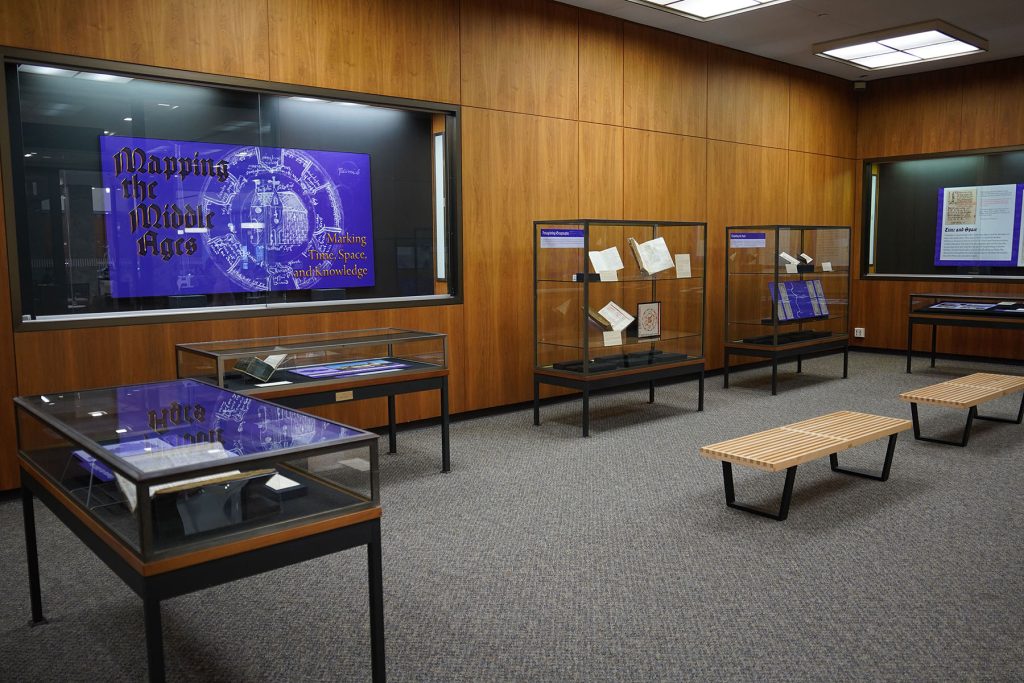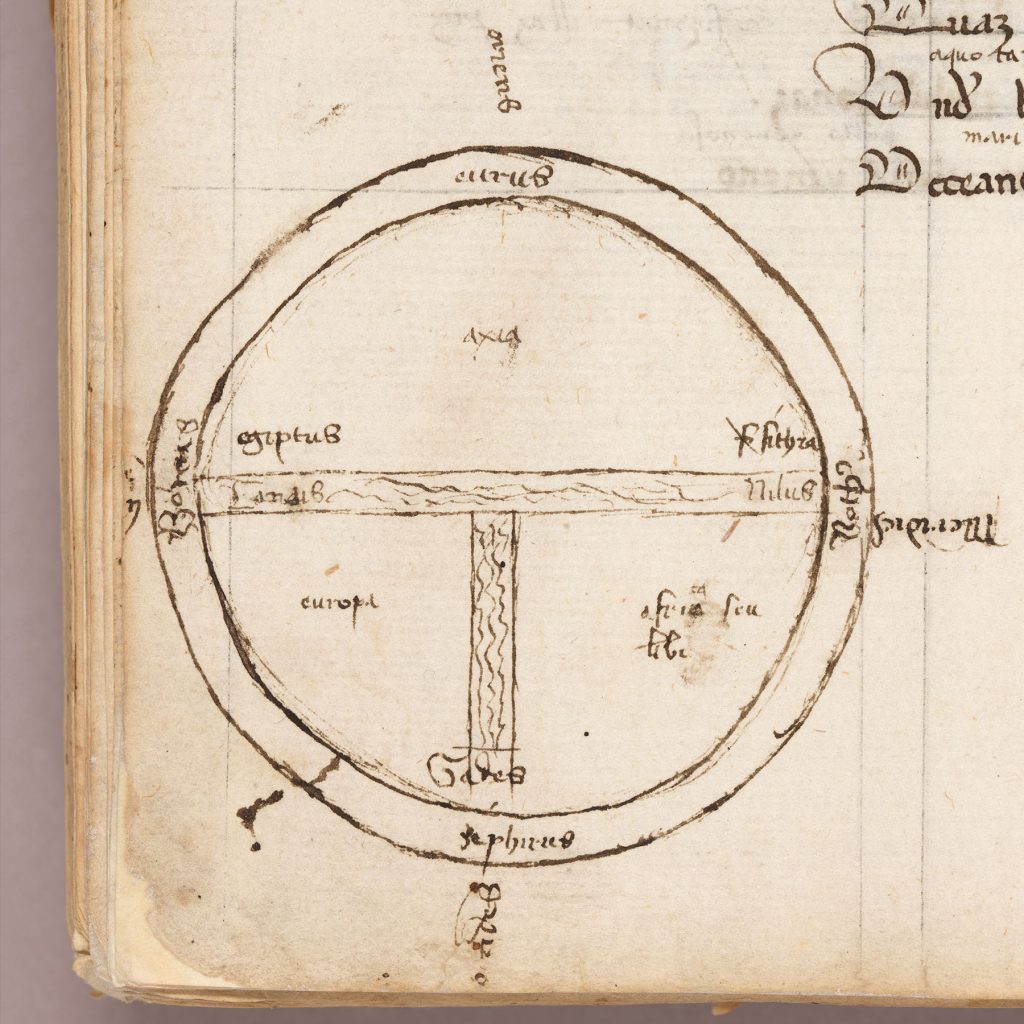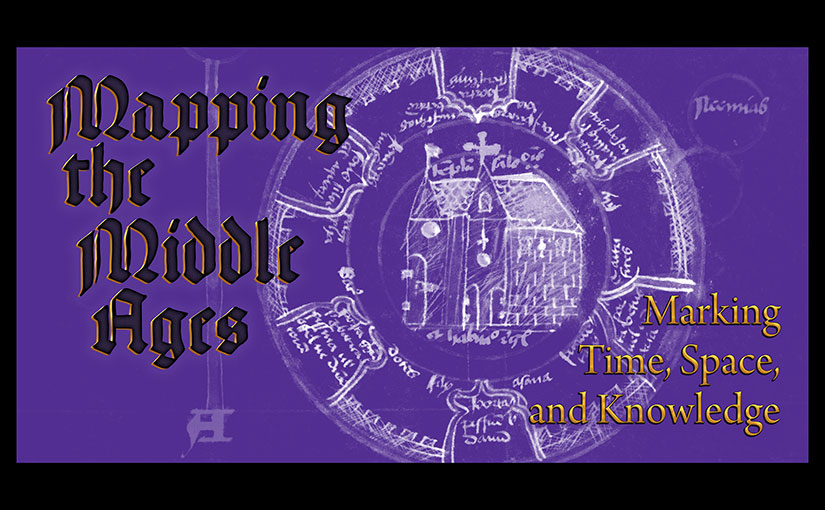Rare Books and Special Collections’ spring exhibition, Mapping the Middle Ages: Marking Time, Space, and Knowledge, is open and will run through July 31st.

The tension between literal and figurative arrangements of space, time, and knowledge during the Middle Ages is brought to the fore through the primary objects that remain. Geography, whether real or imagined, manifests on the page to convey a variety of spatial arrangements: topography, pilgrimage, peripatetic liturgical procession, diaspora, and boundary marking. The materiality of medieval manuscript books expresses a similar reality: geographic colophons mark time and space, prayers localize devotion, and the communal memory of a journey commingled with hope and desperation survives in liturgical readings. Even the scattering of manuscript leaves through biblioclasty creates the boundary of what a book once was and what it has become.

(cod. Lat. d. 7, f. 157v)
To map the Middle Ages is to journey through the space created by the objects and the individuals who used them. If we embrace a manuscript in the totality of itself, we form a new bond and continuity with those who have come before us. The manuscripts in this installation are drawn from the collection of the University of Notre Dame’s Hesburgh Library.
This exhibit is curated by David T. Gura, Curator of Ancient and Medieval Manuscripts. This and other exhibits within the Hesburgh Libraries are generously supported by the McBrien Special Collections Endowment.
All exhibits are free and open to the public during business hours. Exhibition tours may be arranged for classes and other groups by contacting David T. Gura at (574) 631-6489 or dgura@nd.edu.
